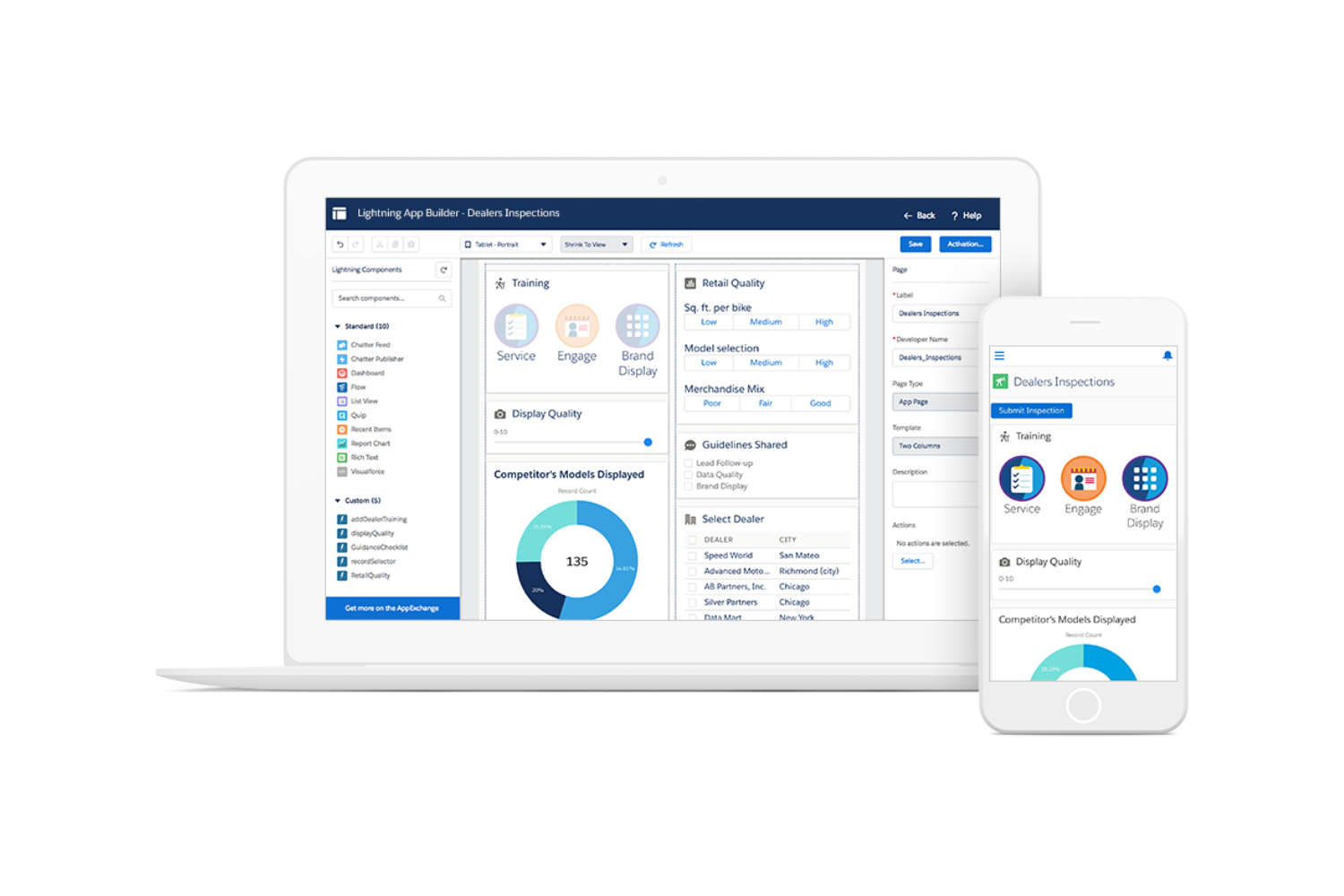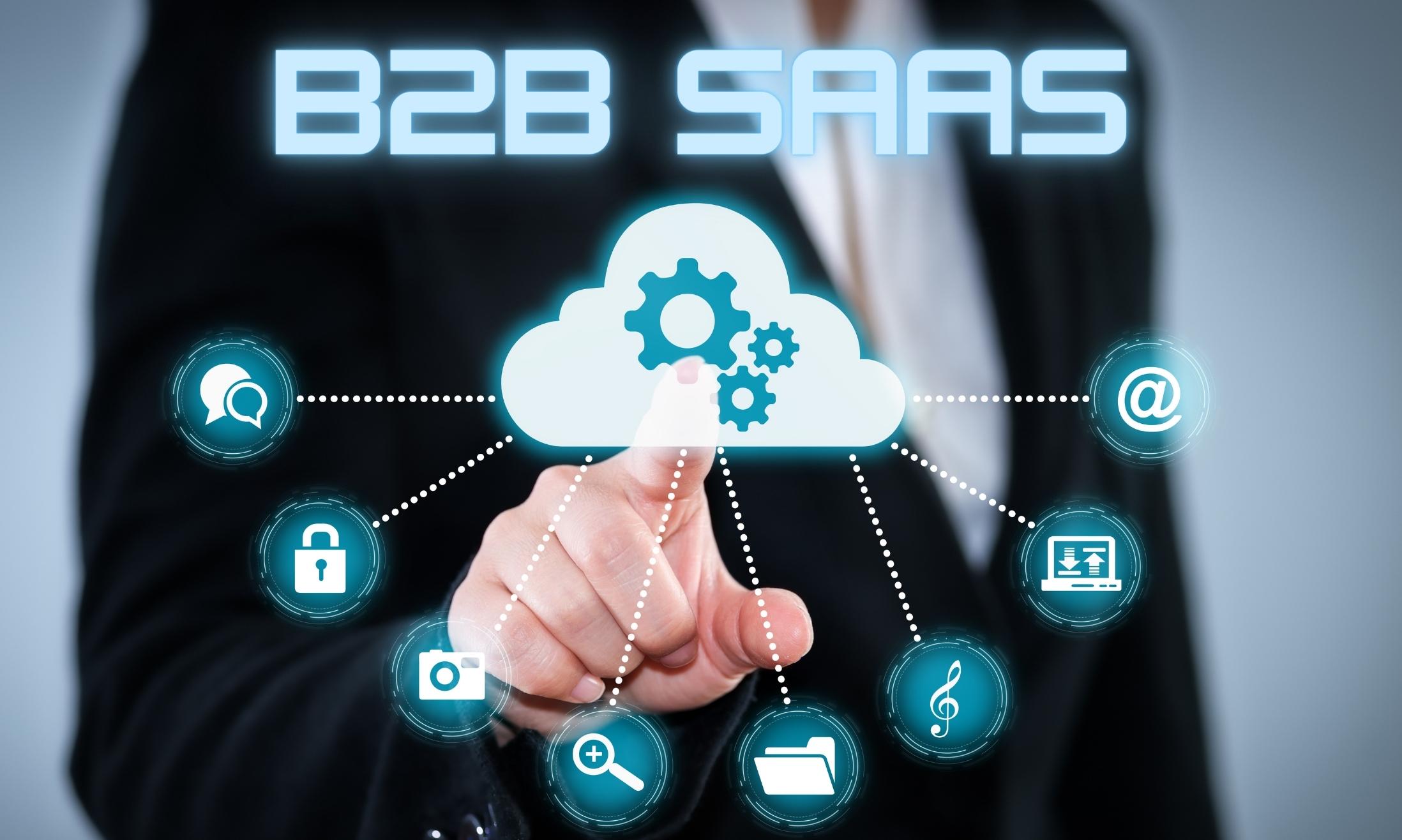Introduction
Welcome to the world of SaaS integration, a concept that is revolutionizing the way businesses operate in the digital age. In today’s interconnected and fast-paced business environment, companies are increasingly relying on Software-as-a-Service (SaaS) applications to streamline their processes, increase productivity, and gain a competitive edge. However, as the number of SaaS applications used by organizations grows, so does the need for effective integration between these disparate systems.
SaaS integration refers to the process of connecting and synchronizing data and processes between different SaaS applications, as well as integrating them with on-premises and legacy systems. The goal of SaaS integration is to create a unified and seamless ecosystem where data flows seamlessly between systems, enabling organizations to gain a holistic view of their operations and make better-informed decisions.
Why is SaaS integration so important? Well, when SaaS applications operate in silos, data duplication, inconsistencies, and manual data entry can occur, leading to inefficiencies, data errors, and lower productivity. With proper integration, organizations can automate data synchronization and streamline workflow, resulting in improved efficiency, reduced manual errors, and significant time and cost savings.
The benefits of SaaS integration are numerous. First and foremost, it allows organizations to leverage the full potential of their SaaS applications, ensuring that they work seamlessly together to optimize business processes. By integrating various applications, organizations can eliminate data silos and achieve a single source of truth for their data, providing a unified view across all systems. This enables teams to access real-time data and make data-driven decisions, leading to improved productivity and customer satisfaction.
Moreover, SaaS integration enables organizations to leverage the power of automation. By integrating different systems, organizations can automate data synchronization, eliminate manual data entry, and streamline workflows. This not only saves time and reduces human errors but also allows employees to focus on strategic tasks that drive business growth.
Additionally, SaaS integration allows organizations to scale and adapt to changing business requirements. As companies grow and evolve, they may need to add or replace SaaS applications. With proper integration in place, new applications can be seamlessly incorporated into the existing ecosystem, and data can be migrated effortlessly. This provides organizations with the flexibility to innovate and adopt new technologies without disrupting their existing operations.
However, implementing SaaS integration comes with its own set of challenges. In the next section, we will explore these challenges in more detail and discuss how to overcome them.
Definition of SaaS Integration
SaaS integration, also known as Software-as-a-Service integration, refers to the process of connecting and integrating various SaaS applications to enable seamless data exchange and workflow automation. It involves establishing a communication channel between different SaaS applications, as well as integrating them with on-premises systems and other third-party platforms.
At its core, SaaS integration revolves around synchronizing data and processes between different SaaS applications to create a unified and cohesive system. It ensures that data flows seamlessly across applications, eliminating data silos and ensuring a consistent, accurate, and up-to-date view of information.
SaaS integration encompasses a wide range of activities, including data integration, application integration, and process integration. Data integration involves syncing and transferring data between applications, while application integration involves integrating the functionality and features of different applications. Process integration, on the other hand, focuses on automating and streamlining business processes by connecting the workflows of various applications.
There are different approaches to SaaS integration, depending on the complexity and needs of the organization. One common method is point-to-point integration, where applications are connected directly with one another. While this approach may work well for a limited number of applications, it becomes cumbersome and difficult to manage as the number of applications increases.
Another approach is to use a middleware or integration platform as a service (iPaaS) solution. With an iPaaS solution, organizations can centralize their integration efforts and manage all their integrations from a single platform. This provides a more scalable, manageable, and flexible approach to SaaS integration, as it allows for easy addition or removal of applications, as well as providing features like data mapping, transformation, and workflow customization.
Overall, SaaS integration plays a vital role in enabling organizations to maximize the value of their SaaS applications. By seamlessly connecting different applications and systems, it ensures that data is accurate, consistent, and accessible across the organization. This empowers teams to make informed decisions, automate manual tasks, and improve overall productivity and efficiency.
In the next section, we will delve into the benefits of SaaS integration and explore how it impacts businesses.
Benefits of SaaS Integration
SaaS integration offers numerous benefits for organizations looking to streamline their operations and improve their overall efficiency. Let’s explore some of these benefits in detail:
1. Enhanced Data Accuracy and Consistency: By integrating various SaaS applications, organizations can eliminate data silos and ensure data consistency throughout the organization. Data is automatically synchronized across systems, reducing the risk of manual errors and inconsistencies. This ensures that teams have access to accurate and up-to-date information, leading to better decision-making and improved productivity.
2. Improved Productivity and Efficiency: SaaS integration enables organizations to automate manual tasks and streamline workflows. Instead of wasting time on manual data entry and transferring information between systems, employees can focus on more strategic and value-added activities. This not only improves productivity but also allows employees to allocate their time and energy to tasks that drive business growth.
3. Seamless Collaboration and Communication: SaaS integration facilitates seamless collaboration and communication among teams. When applications are integrated, data can be easily shared and accessed by authorized personnel, regardless of their location. This promotes effective collaboration, allowing teams to work together on projects and share insights in real-time.
4. Faster Decision-Making: With SaaS integration, decision-making becomes faster and more informed. Integrated systems provide real-time access to accurate data, enabling organizations to make data-driven decisions. By having a unified view of their operations, businesses can quickly identify trends, spot potential issues, and make timely adjustments to their strategies.
5. Scalability and Flexibility: SaaS integration allows organizations to scale and adapt to their changing business needs. As new applications and functionalities are required, integrating them into the existing ecosystem becomes easier. This flexibility enables organizations to stay agile and adopt new technologies without disruption, ensuring that their systems can evolve alongside their business.
6. Cost Savings: SaaS integration can lead to significant cost savings for organizations. By automating processes, reducing manual errors, and improving productivity, businesses can reduce operational costs. Additionally, with a centralized integration platform, maintenance and management efforts are streamlined, resulting in lower overhead costs.
7. Customer Satisfaction: Integrated systems provide a seamless experience for customers. With SaaS integration, organizations can have a complete and unified view of customer data, enabling personalized and targeted interactions. This leads to improved customer satisfaction, loyalty, and ultimately, business growth.
In summary, SaaS integration offers a wide range of benefits, including enhanced data accuracy, improved productivity, seamless collaboration, faster decision-making, scalability, cost savings, and increased customer satisfaction. By leveraging the power of integrated systems, organizations can optimize their operations, drive growth, and stay ahead of the competition.
Common Challenges in SaaS Integration
While SaaS integration brings many benefits, like any complex process, it also comes with its fair share of challenges. Let’s discuss some of the common challenges organizations may face when implementing SaaS integration:
1. Data Compatibility: Integration often involves dealing with different data formats, structures, and schemas across various SaaS applications. Incompatibility issues can arise when trying to synchronize and map data between systems. Organizations need to ensure that the data being transferred is in a compatible format and can be seamlessly integrated without losing its integrity or meaning.
2. Security and Data Privacy: Integrating multiple SaaS applications means handling sensitive data and transferring it between systems. It is crucial to consider data security protocols, ensure secure transmission of data, and comply with privacy regulations. Organizations must implement robust security measures to safeguard data and protect against potential cyber threats or breaches.
3. System Complexity and Scalability: As the number of integrated systems and applications increases, so does the complexity of the integration process. Integrating multiple systems can become challenging, especially when dealing with large-scale implementations. Organizations need to consider the scalability of their integration solution to accommodate future growth and ensure that it can handle increased data flow and system demands.
4. Maintenance and Support: Maintaining and supporting an integrated SaaS environment can be demanding. As organizations add or update applications, they may encounter compatibility issues, software updates, and new feature releases that require ongoing support and maintenance. Organizations should allocate resources and establish support processes to address any potential issues promptly.
5. Application Changes and Upgrades: SaaS applications often undergo updates, new feature releases, and customizations. These changes can impact existing integrations, requiring adjustments to the integration workflows and configurations. Organizations need to stay vigilant and accommodate application changes to ensure seamless data flow and functionality.
6. Reliability and Performance: Integrating different SaaS applications requires a reliable and high-performing integration infrastructure. Organizations need to ensure that the integration solution can handle large data volumes, maintain data integrity, and operate with minimal latency. Performance issues can impact productivity and hinder real-time data exchange.
7. Vendor Support and Compatibility: Integrating SaaS applications from different vendors can pose compatibility challenges. Variations in APIs, protocols, and data models can make integration more complex. Organizations should choose integration solutions that are compatible with the SaaS applications they use and ensure ongoing vendor support and collaboration.
Managing and mitigating these challenges requires careful planning, expertise, and the use of effective integration tools and strategies. Organizations should conduct thorough research, engage with integration experts, and invest in robust integration solutions to overcome these challenges successfully.
Next, we will explore key considerations in choosing the right SaaS integration solution to address these challenges effectively.
Choosing the Right SaaS Integration Solution
When it comes to SaaS integration, choosing the right integration solution is crucial for a successful implementation. Here are key considerations to keep in mind when selecting a SaaS integration solution:
1. Compatibility: Ensure that the integration solution is compatible with the SaaS applications you use. It should support the required APIs, protocols, data formats, and integration capabilities of your applications. Compatibility ensures smooth data synchronization and seamless connectivity between systems.
2. Scalability: Consider the scalability of the integration solution. As your organization grows and adds more SaaS applications, the integration solution should be able to handle increased data flow and system demands. It should easily accommodate new applications and scale alongside your business needs.
3. Customization and Flexibility: Look for an integration solution that allows for customization and flexibility. Different organizations have unique requirements and workflows. The integration solution should provide options for custom integration workflows, data mapping, and transformation to meet your specific needs.
4. Ease of Use: The integration solution should have a user-friendly interface and be easy to use, even for non-technical users. It should offer intuitive design tools, drag-and-drop functionality, and visual mapping capabilities to simplify the integration process and empower business users to configure integrations without heavy technical involvement.
5. Security and Compliance: Data security and compliance are paramount when it comes to integrating SaaS applications. Ensure that the integration solution provides robust security features, including data encryption, user access controls, and monitoring capabilities. It should also comply with industry standards and regulations to safeguard sensitive data.
6. Support and Maintenance: Consider the level of support and maintenance provided by the integration solution provider. Look for a solution that offers timely technical support, documentation, and training resources. Regular updates and new feature releases are also essential to ensure that the integration solution remains up to date and compatible with evolving SaaS applications.
7. Cost-effectiveness: Evaluate the cost-effectiveness of the integration solution. Consider the initial setup costs, licensing fees, ongoing maintenance costs, and any additional costs for integrating new applications or scaling the solution. It’s important to have a clear understanding of the total cost of ownership to make an informed decision.
8. Integration Analytics: Integration analytics capabilities can provide valuable insights into the performance and efficiency of your integrations. Consider an integration solution that offers analytics and monitoring functionalities to track data flows, identify bottlenecks, and optimize your integrations for better performance and reliability.
By carefully considering these factors and aligning them with your organization’s specific needs, you can choose the right SaaS integration solution that enables seamless data exchange, improves efficiency, and drives business growth.
In the next section, we will explore some best practices for implementing SaaS integration to ensure a successful integration journey.
Best Practices for SaaS Integration
Implementing SaaS integration requires careful planning, strategic execution, and ongoing maintenance. Here are some best practices to consider when integrating SaaS applications:
1. Define Clear Integration Goals: Start by clearly defining your integration goals. Determine what data should be synchronized, which processes need automation, and what outcomes you expect to achieve with integration. This will help you stay focused during the integration process and ensure that the integration meets your specific business needs.
2. Conduct a Comprehensive Data Analysis: Before integrating SaaS applications, conduct a thorough data analysis. Understand the structure, quality, and dependencies of the data in each application. This analysis will help identify any data inconsistencies, data mapping requirements, and potential challenges that may arise during integration.
3. Design Integration Workflows: Design clear and well-defined integration workflows. Map out how data will flow between applications and specify any data transformations or validations that need to occur. Consider the sequence of integration steps, error handling mechanisms, and exception handling to ensure smooth data exchange and proper data integrity.
4. Implement Incremental Integration: Instead of attempting to integrate all applications simultaneously, consider implementing integration in incremental stages. Start with a few critical applications and gradually expand the integration scope. This allows for better testing, issue resolution, and minimizes disruptions to ongoing operations.
5. Ensure Data Consistency and Quality: Pay close attention to data consistency and quality during integration. Implement data validation and cleansing processes to identify and correct any data discrepancies or errors. It’s essential to have consistent and accurate data throughout the integrated system to make informed business decisions.
6. Use a Robust Integration Platform: Invest in a robust integration platform or middleware solution that can handle the complexity of SaaS integration. A reliable platform will provide features like data mapping, transformation, and orchestration capabilities, making integration more manageable and scalable.
7. Monitor and Track Integration Performance: Implement monitoring and tracking mechanisms to gain visibility into the performance and stability of your integrations. Regularly monitor data flows, error rates, and processing times to identify bottlenecks or performance issues. This allows for proactive troubleshooting and ensures optimal integration performance.
8. Implement Proper Security Measures: Ensure that proper security measures are in place to protect sensitive data during integration. Use encryption methods for data transmission, implement stringent access controls, and regularly update security protocols to prevent unauthorized access or data breaches.
9. Document Integration Processes: Documenting your integration processes is essential for maintenance purposes and knowledge sharing across teams. Document the integration workflows, data mapping rules, error handling processes, and any other critical information. This documentation will serve as a reference for future enhancements, troubleshooting, and onboarding of new team members.
10. Continuously Test and Improve: Perform comprehensive testing throughout the integration process to identify and resolve any issues before they have a significant impact on operations. Additionally, continuously evaluate the effectiveness of your integration strategy and make necessary improvements to optimize data flows, performance, and overall integration efficiency.
By following these best practices, organizations can ensure a successful and effective SaaS integration implementation, leading to improved efficiency, enhanced data quality, and ultimately, better business outcomes.
In the next section, we will explore real-world case studies of successful SaaS integration implementations.
Case Studies: Successful SaaS Integration Implementations
Real-world case studies provide valuable insights into how organizations have achieved successful SaaS integration implementations. Let’s explore a few examples:
1. Company XYZ: Company XYZ, a global e-commerce retailer, successfully integrated their customer relationship management (CRM) and order management system (OMS) with their shipping and logistics platforms. By integrating these systems, they achieved real-time visibility into order status, inventory levels, and shipping updates. This allowed them to streamline their order fulfillment process, improve delivery times, and enhance the overall customer experience, resulting in increased customer satisfaction and repeat business.
2. Organization ABC: Organization ABC, a healthcare provider, integrated their electronic medical record (EMR) system with their billing and insurance management software. This integration enabled seamless data exchange between clinical and administrative systems. It improved billing accuracy and efficiency, eliminated manual data entry, and reduced billing errors. The integration also facilitated real-time insurance eligibility verification, ensuring that patients have accurate coverage information, leading to faster claims processing and improved revenue cycle management.
3. Company DEF: Company DEF, a manufacturing company, integrated their enterprise resource planning (ERP) system with their supply chain management (SCM) software. The integration allowed them to automate and optimize their procurement processes, improving inventory management and reducing stockouts. Real-time data synchronization between the ERP and SCM systems enabled accurate demand forecasting and improved order fulfillment, resulting in cost savings, reduced inventory holding costs, and better customer satisfaction.
4. Organization GHI: Organization GHI, a professional services firm, integrated their project management software with their time tracking and invoicing systems. This integration enabled seamless data flow from project planning to time tracking and client invoicing. The integration automated the invoicing process, eliminating manual data entry and reducing billing errors. It also provided real-time insights into project profitability, resource allocation, and client billing status, leading to improved project profitability and streamlined financial operations.
These case studies highlight the tangible benefits that organizations have achieved through successful SaaS integration implementations. By leveraging the power of integrated systems, these companies were able to enhance operational efficiency, improve data accuracy, optimize processes, and drive business growth.
Each of these success stories underscores the importance of careful planning, selecting the right integration solution, and implementing best practices to ensure a smooth and effective SaaS integration journey.
In the final section, we will summarize the key points discussed and provide closing thoughts on the importance of SaaS integration in today’s business landscape.
Conclusion
SaaS integration plays a vital role in today’s business landscape, enabling organizations to harness the full potential of their SaaS applications and streamline their operations. By integrating different systems, organizations can achieve a unified and seamless ecosystem where data flows seamlessly, processes are automated, and informed decisions can be made.
We started by defining SaaS integration as the process of connecting and synchronizing data and processes between different SaaS applications. We explored the benefits it offers, including enhanced data accuracy, improved productivity, better collaboration, faster decision-making, scalability, cost savings, and increased customer satisfaction.
However, we also discussed the common challenges organizations may face during SaaS integration, such as data compatibility, security concerns, system complexity, and maintenance requirements. These challenges can be overcome by implementing best practices such as setting clear goals, conducting data analysis, designing well-defined integration workflows, and ensuring proper security measures.
We also highlighted the importance of choosing the right SaaS integration solution that is compatible, scalable, easy to use, secure, and cost-effective. The integration solution should provide the necessary features and functionalities to achieve seamless data exchange and process automation.
Real-world case studies further demonstrated the positive impact of successful SaaS integration implementations on organizations across various industries. By integrating systems such as CRM and OMS, EMR and billing software, ERP and SCM, and project management with time tracking and invoicing, these organizations achieved improved efficiency, accuracy, customer satisfaction, and business growth.
In conclusion, SaaS integration is essential for organizations seeking to maximize the value of their SaaS applications and optimize their operations. It enables seamless data exchange, automation of processes, and improved decision-making. By following best practices, choosing the right integration solution, and learning from successful implementations, organizations can embark on a successful SaaS integration journey that drives their growth, improves efficiency, and delivers a competitive advantage in today’s digital landscape.

























